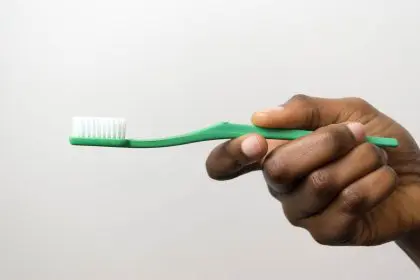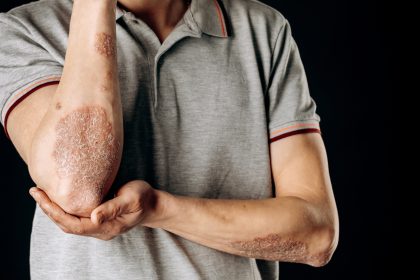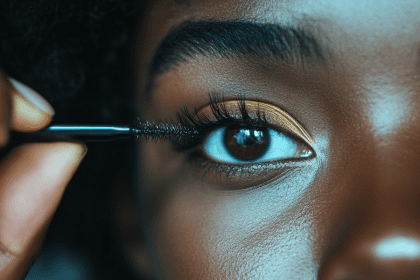Warts can be an unwelcome surprise when they appear on your body. These small, rough growths can seem to come out of nowhere, leaving many people puzzled and concerned about their health. Although warts are generally harmless, their sudden appearance can cause distress, leading individuals to wonder about the underlying reasons. In this article, we will delve into the four surprising reasons warts may appear on your body, shedding light on the factors that contribute to their development. Understanding these causes can help you take preventive measures and manage any concerns you may have about these common skin growths.
1. Human papillomavirus (HPV): The invisible culprit
The primary cause of warts is the human papillomavirus (HPV). This highly contagious virus can be easily transmitted through direct contact with an infected person or surface. There are over 100 different strains of HPV, and some of these strains specifically target the skin, leading to the development of warts. The virus enters the body through tiny cuts or abrasions in the skin, setting the stage for wart formation.
How HPV leads to wart formation
Once the virus is inside the body, it triggers an overgrowth of cells on the outer layer of the skin. This results in the formation of warts, which can appear anywhere on the body, depending on the strain of HPV involved. While warts are most commonly found on the hands and feet, they can also develop on the face, legs and other areas. It’s important to note that while HPV is the root cause of warts, not everyone exposed to the virus will develop them. Factors such as a weakened immune system, skin trauma and genetic predisposition can increase the likelihood of wart formation.
2. Weakened immune system: A gateway for warts
Your immune system is crucial in protecting your body from infections, including those caused by HPV. However, when your immune system is weakened, it becomes less effective at fighting off the virus, increasing the risk of wart formation. Several factors can contribute to a weakened immune system, including stress, chronic illness, poor nutrition and certain medications.
Why a strong immune system matters
A healthy immune system is your body’s first line of defense against infections, including the HPV virus responsible for warts. When your immune system is functioning optimally, it can recognize and attack the virus before it can cause harm. On the other hand, if your immune system is compromised, the virus can take hold, leading to the development of warts. Strengthening your immune system through a balanced diet, regular exercise, adequate sleep and stress management can help reduce your risk of developing warts and other viral infections.
3. Skin-to-skin contact: The unseen risk
One of the most common ways warts spread is through skin-to-skin contact. This can happen during physical activities, such as sports, where close contact is common, or even through casual interactions like shaking hands. The virus can also be transmitted by sharing personal items like towels, razors or shoes. Public places like swimming pools, gyms and locker rooms are breeding grounds for the HPV virus due to the warm, moist environment that it thrives in.
How to protect yourself from wart transmission
Preventing the spread of warts involves taking precautions in both public and private settings. Avoid sharing personal items that come into contact with your skin, and be mindful of the surfaces you touch in communal areas. Wearing flip-flops in public showers, using clean towels and regularly disinfecting commonly touched surfaces can reduce your risk of exposure to the virus. Additionally, practicing good hygiene — such as washing your hands frequently and keeping your skin clean and dry — can help prevent the spread of warts.
4. Minor skin injuries: The unexpected entry point
Warts often develop in areas where the skin has been damaged or broken. Even minor cuts, scrapes or abrasions can provide an entry point for the HPV virus. Once the virus enters the skin, it can take weeks or even months for a wart to develop, making it difficult to pinpoint the exact moment of infection. This is why warts can sometimes appear out of nowhere long after the initial injury has healed.
The importance of protecting your skin
Taking care of your skin is essential in preventing the development of warts. Be mindful of any injuries to your skin — no matter how small — and take steps to keep the affected area clean and protected. Covering cuts and scrapes with bandages and using antiseptics can help prevent the HPV virus from entering your skin. Additionally, avoiding habits that cause skin damage — such as nail-biting or picking at scabs — can reduce your risk of developing warts.
Taking control of wart prevention
Warts may be common, but understanding the reasons behind their appearance can empower you to take control of your skin health. By recognizing the role of HPV, the impact of a weakened immune system, the risks of skin-to-skin contact and the importance of protecting your skin, you can take proactive steps to reduce your risk of developing warts. While warts are typically harmless and can often be treated with over-the-counter remedies, it’s always a good idea to consult a health care professional if you have concerns about warts on your body. By staying informed and vigilant, you can keep your skin healthy and free from these unexpected growths.
This story was created using AI technology.
















